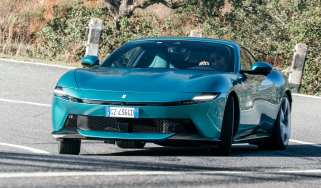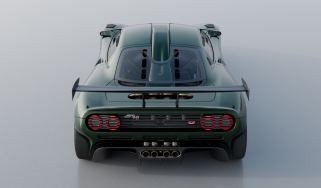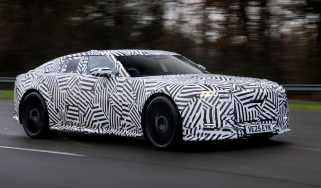Is there hope for the future of the performance car?
After reflecting on our evo Eras tests looking at performance cars of the past, our minds turn to wonder about what's to come
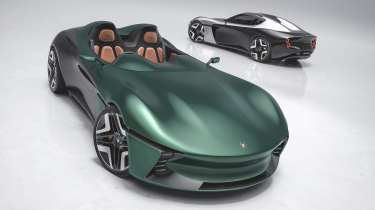
If we were to publish a follow-up to our final Eras gathering, what might the 2035 performance car landscape look like? And looking back at that first 1980s-themed Eras test, how many threads from that decade might still be present?
Given the resurgence of retro styling and reborn nameplates – take the Renault 4 and 5 and, ahem, the Ford Capri – some 2030s cars may well reference previous decades. As consumers face the transition to electrification, well-known badges and design language will continue to give buyers and brands reassuring familiarity to lean on.
Naturally, there’ll be a great many more EVs to choose from in 2035: that year remains the watershed for new combustion-engined car sales in Europe, though the UK government is currently committed to 2030 as the cut-off, with hybrids allowed to remain on sale until 2035 (although both Mercedes and Toyota have called on the EU to rethink the 2035 ban, and you can expect more to follow).
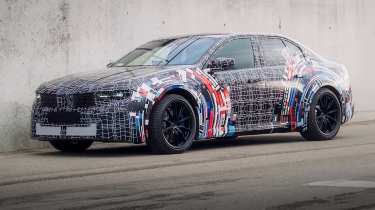
In the interim, expect a large influx of performance Plug-in Hybrid EVs (PHEVs) to join BMW’s M5. The next M3 will be offered as a Battery EV (BEV) and PHEV, the next Audi RS5 and RS6 are both PHEVs, as will be Alfa Romeo’s Giulia Quadrifoglio successor and Honda’s next Type Rs – Prelude first then Civic. Mercedes has stated it will shift focus back to ‘electrified ICE development’, while Porsche has started down that path with the 911 Carrera GTS and Turbo.
Each Eras test has featured at least one hot hatch, but the combustion hatchback genre as we know it is a dying breed. Consumer tastes and manufacturer product plans have shifted to SUVs. The Renault 5’s reception may precipitate more smaller, non-SUV-shaped EVs however, and, in turn, performance versions. A star of that first ’80s Eras test was the Peugeot 205 GTI, and Peugeot has recently revealed an all-electric 208 GTI with styling explicitly referencing the 205.
Alpine has already launched the A290, itself an homage to hot versions of the original Renault 5 – though sales aren’t necessarily at the level Alpine needs them to be. Meanwhile Hyundai’s Ioniq 5 N shows the potential for entertainment and agility that can come from a creatively engineered EV. As batteries get smaller and lighter over the coming decade, kerb weights will fall and the 2030s could include some genuinely exciting electric hot hatches.
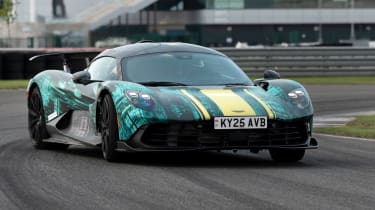
At the other end of the scale, there will always be supercars: expect a hybridised 1000bhp to become the new normal in the 2030s. Intelligent traction control, torque vectoring and ever-evolving tyre and suspension tech will make big-power cars more driveable than ever, as we’ve experienced in an Aston Martin Valhalla prototype. And the genuinely thrilling driving experience offered by the Ferrari 296 Speciale suggests cars will still be fun to drive even as they become more complex.
Currently, manufacturers registering fewer than 1000 cars annually will be allowed to continue selling pure combustion cars in the UK beyond 2030 – so there’s a good chance Caterham and Morgan will still be doing what they do best ten years from now, though their cars will likely carry ever higher price tags.
Perhaps at greatest risk are the mainstream sports cars in the middle. With pressure on manufacturers from all sides, investment in brand new combustion and/or hybrid sports car platforms (or hybridising existing ones) is a tricky thing to sign off.
Appetite for pure electric sports cars is an unknown quantity; electric hypercars such as the Lotus Evija, Pininfarina Battista and Rimac Nevera have struggled to find customers. Nonetheless, Alpine is working on an electric successor to the A110 (with a hybrid A110 strongly rumoured), and new start-ups such as British brand Longbow are taking shape. The question is how traditional sports car buyers will take to them.
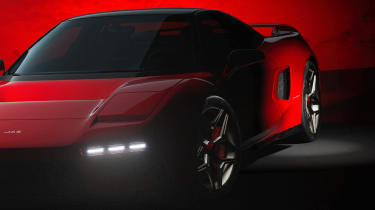
The restomod market continues to boom, and as traditional sports cars become rarer, ‘remastered’ versions of modern classics will likely hold more appeal than ever. But regular, unmodified older cars may also get new leases of life via, for example, up-to-date tyres; Michelin Pilot Sport Cup 2s recently knocked 16 seconds off a lap time for a Porsche Carrera GT at the Nürburgring!
Could efuels play a pivotal part in the future of the performance car in the next decade? Possibly. Regardless of its source, putting fuel into cars is unlikely to get cheaper; with likely tax increases to encourage EV take-up and an unstable world putting further pressure on the existing oil supply chain, filling a tank could be a pricey endeavour. Likewise, increasingly stringent ADAS regs and connected vehicle tech are unlikely to make cars in general cheaper, nor less complex.
The performance car species will always endure, and based on our 2020s test, there’ll be a rich vein of compelling and rewarding driver’s cars a decade from now – some with abilities to blow our minds. Let’s hope there’ll still be the opportunity, legislature and infrastructure to enjoy all of the modern classics from previous eras, too.
